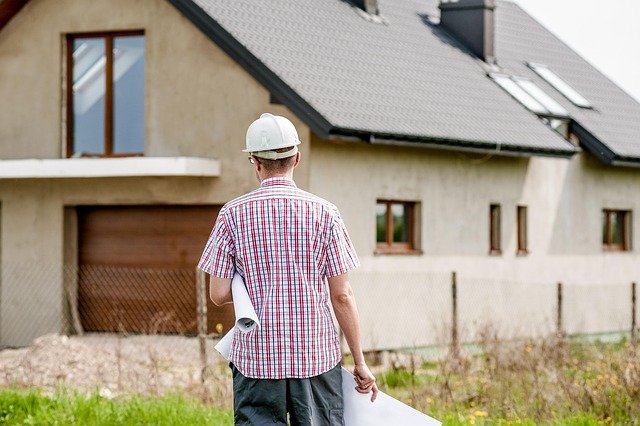Prefab Mini Homes: A New Comfortable Life for Seniors
Prefabricated homes have emerged as an innovative housing solution for seniors seeking comfortable, affordable, and low-maintenance living options. These factory-built structures offer numerous advantages, including faster construction times, cost efficiency, and customizable designs that can accommodate the specific needs of older adults. With compact yet functional layouts, prefab mini homes provide seniors with independence while addressing mobility concerns and minimizing maintenance responsibilities that often become challenging with age.

Understanding Prefab Homes for Seniors
Prefabricated homes designed for seniors focus on accessibility, comfort, and convenience. These homes feature single-level layouts, wider doorways for potential mobility aid access, slip-resistant flooring, and strategically placed grab bars. Many manufacturers offer customization options that allow for additional senior-friendly features such as walk-in showers, lowered countertops, and emergency response systems. The controlled factory environment where these homes are built ensures consistent quality and adherence to building codes and accessibility standards.
Benefits of 60m² Prefab Homes for Older Adults
A 60m² (approximately 645 square feet) prefab home provides an ideal balance between comfortable living space and manageability for seniors. This size typically accommodates a bedroom, bathroom, kitchen, and living area—sufficient space for daily activities without overwhelming maintenance requirements. The compact footprint reduces cleaning time and utility costs while still offering enough room for entertaining visitors or hosting overnight guests. Additionally, these smaller homes often feature open floor plans that eliminate unnecessary barriers and improve navigation for those with mobility limitations.
Cost Considerations for Prefab Homes with Price Analysis
The financial aspect of prefabricated homes makes them particularly attractive for seniors on fixed incomes or those looking to downsize. The controlled manufacturing environment reduces construction waste and labor costs, resulting in substantial savings compared to traditional site-built homes. Base models of 60m² prefab homes typically range from $80,000 to $150,000, depending on design complexity, materials quality, and customization level. Additional costs include land purchase, site preparation, foundation construction, utility connections, and permits—typically adding $20,000 to $50,000 to the total investment.
Installation and Placement Options for Senior Living
Prefabricated homes offer versatile placement options that support various senior living arrangements. Many families install these structures as accessory dwelling units (ADUs) on existing family property, allowing seniors to live independently while remaining close to family support. Others place these homes in senior-friendly communities with shared amenities and services. The installation process typically takes days rather than months, minimizing disruption and allowing seniors to transition to their new homes quickly. Some manufacturers offer turnkey services that handle all aspects of delivery, installation, and finishing work.
Customization Features for Aging in Place
The adaptability of prefabricated homes makes them ideal for long-term aging in place. Manufacturers offer numerous customization options specifically designed for seniors’ evolving needs. These may include adjustable-height counters and cabinets, reinforced bathroom walls for future grab bar installation, wider hallways to accommodate wheelchairs, and smart home technology for remote monitoring and assistance. Additional features often include enhanced insulation for energy efficiency, non-slip flooring throughout, lever-style door handles, and motion-activated lighting to prevent falls.
Comparative Analysis of Prefab Home Providers for Seniors
The market offers various prefabricated home options specifically designed with seniors in mind. Here’s a comparison of notable providers:
| Provider Name | 60m² Model Features | Senior-Specific Adaptations | Price Range |
|---|---|---|---|
| Clayton Homes | Open floor plans, energy-efficient appliances | Zero-threshold entrances, wider doorways | $90,000-$120,000 |
| Champion Homes | Single-level designs, quality insulation | Bathroom grab bars, accessible kitchen layouts | $85,000-$115,000 |
| Deltec Homes | Circular designs for maximum space efficiency | Universal design principles, storm resistance | $110,000-$160,000 |
| Method Homes | Modern aesthetics, sustainable materials | Smart home integration, accessible fixtures | $130,000-$180,000 |
| Connect Homes | Floor-to-ceiling windows, modular design | Single-level living, wheelchair accessibility | $120,000-$170,000 |
Prices, rates, or cost estimates mentioned in this article are based on the latest available information but may change over time. Independent research is advised before making financial decisions.
Community Integration and Support Services
Beyond the physical structure, the success of prefab homes for seniors often depends on community integration and access to essential services. Many seniors place their prefabricated homes in communities that offer transportation services, healthcare facilities, social activities, and emergency response systems. Some prefab home manufacturers partner with senior service providers to create comprehensive support networks that enhance the living experience. These partnerships may include home care agencies, meal delivery services, and technology companies specializing in remote health monitoring, ensuring seniors can maintain independence while accessing necessary assistance.
Prefabricated homes represent an evolving housing solution addressing the specific needs of an aging population. With their combination of affordability, customization options, and senior-friendly designs, these structures offer a practical alternative to traditional housing or assisted living facilities. As technology continues to advance and manufacturers develop more specialized features, prefab mini homes will likely become an increasingly popular choice for seniors seeking to maintain independence and quality of life in their later years.




